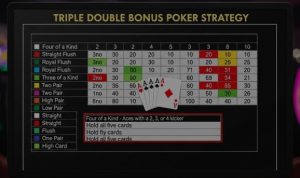The Growing Demand for Structured PLO Education
Pot Limit Omaha has exploded in popularity over the past decade, moving from niche poker variant to mainstream game. This growth has created a new problem: most players jump into PLO games with only their No Limit Hold’em knowledge, leading to expensive mistakes and frustration. The fundamental differences between these two games mean that success in one does not guarantee success in the other.
Professional players and serious amateurs alike recognize that structured training in PLO is no longer optional. The game’s complexity demands dedicated study, practice, and analysis. Players who invest time in proper pot limit Omaha training consistently outperform those who rely on intuition or transferred skills from other poker variants.
Why PLO Demands Different Skills Than Hold’em
The shift from two hole cards to four changes everything about hand selection, equity calculation, and strategic thinking. In Hold’em, a player might have a clear best hand by the flop. In PLO, equity runs much closer between competing hands, and dramatic swings are common even when players think they hold strong positions.
Drawing hands in PLO carry significantly more value than in Hold’em. A bare top pair that might be strong in Hold’em often becomes a marginal holding in Omaha. Players must learn to evaluate hands based on multiple factors: straight possibilities, flush draws, full house potential, and how these elements combine to create or diminish value.
The pot limit betting structure adds another layer of complexity. Unlike no limit games where players can shove all their chips at any time, pot limit forces more strategic bet sizing and planning across multiple streets. This constraint makes hand reading more difficult and requires a deeper knowledge of range construction.
Core Concepts Every PLO Player Must Master
Hand selection in Omaha revolves around coordination. Four cards do not mean four times the possibilities. Instead, players must look for cards that work together: suited combinations, connected ranks, and pairs that can make sets. Random combinations of high cards, even strong ones, often lead to second-best hands and significant losses.
Position takes on extra importance in pot limit Omaha. The ability to control pot size and gather information before acting becomes more valuable when equity runs closer between hands. Players in late position can exploit these advantages more effectively, making position-aware play essential for long-term success.
Bankroll management requires special attention in PLO due to higher variance. Even skilled players experience broader swings than they would in Hold’em. Training programs that address proper bankroll sizing help players survive the inevitable downswings without going broke.
The Mathematics of Four-Card Poker
Equity calculations in PLO require different approaches than Hold’em. With four cards instead of two, the number of possible combinations increases dramatically. Players cannot simply memorize a few key percentages and expect to make good decisions. Instead, they must develop intuition for how different hand types perform against various ranges.
Blockers become more important in Omaha. When a player holds certain cards, they reduce the likelihood that opponents hold specific strong hands. Advanced players use blocker concepts to make more aggressive plays in the right situations, extracting maximum value or successfully executing bluffs.
Drawing to the nuts matters more in PLO than in almost any other poker variant. Second-best hands get paid off more frequently because players often commit chips with strong but not best holdings. Training helps players recognize when their draws will make the best hand versus when they might be drawing to a loss.
Building a Solid PLO Foundation
Beginning players should start with tight hand selection and aggressive play when they do enter pots. The temptation to play more hands because you receive four cards is one of the most expensive mistakes in PLO. Quality over quantity applies even more in Omaha than in other games.
Starting hand charts provide useful guidelines, but players must learn the principles behind these charts. Knowing why certain hands perform well helps players adjust to different game conditions and opponent types. Memorization without comprehension leads to robotic play that better opponents exploit.
Post-flop planning begins pre-flop. Before putting chips in the pot, skilled players consider what they will do on various board textures. This forward thinking helps avoid difficult spots and reduces mistakes when facing aggression on later streets.
Advanced Concepts for Experienced Players
Multi-street barrel bluffing requires careful board texture reading and opponent modeling. Because so many hands have equity in PLO, successful bluffs often need to tell a consistent story across all streets. Training helps players identify spots where their perceived range allows for profitable bluffs.
Range balancing takes on different dimensions in Omaha. With more possible holdings and closer equity, players must protect various parts of their range on different board textures. This balancing act prevents opponents from exploiting predictable patterns.
Exploitative adjustments matter more than in some other poker variants. The player pool in many PLO games includes more recreational players who make consistent mistakes. Training programs that teach exploitation strategies help players maximize profit against weak opposition while maintaining solid play against strong opponents.
Mental Game Considerations for PLO
The higher variance in pot limit Omaha tests emotional control more than most poker games. Players must accept that they will sometimes get their money in good and lose, sometimes multiple times in a session. Training that addresses tilt control and emotional regulation helps players maintain their edge during difficult stretches.
Study habits must adapt to PLO’s complexity. Hand review takes longer because evaluating all possible holdings and outcomes requires more computation. Players who commit to regular study sessions, even just a few hours per week, show marked improvement compared to those who only learn at the table.
Peer review and discussion accelerate learning. Because PLO situations often have multiple reasonable approaches, getting feedback from other serious players helps identify leaks and alternative lines. Study groups and forums dedicated to Omaha strategy provide valuable resources for improvement.
Making the Commitment to Serious Study
Success in pot limit Omaha does not happen by accident. The game rewards preparation, study, and disciplined execution. Players who treat PLO education as an investment rather than an expense position themselves for long-term profit in one of poker’s most exciting and lucrative variants.
The time invested in proper training pays dividends for years. As the player pool becomes more educated, those who stay ahead of the curve maintain their edge. Starting today with structured learning gives players a head start in mastering this difficult and rewarding game.







